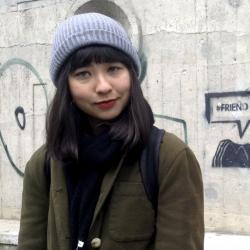Grandagarður 20 is a stunning building. On sunny days it stands stark against the blue sky, four stories of chipped paint and glass. On overcast days its white shades and translucent windows blend into the clouds. The building was originally used as a herring factory and is owned by HB Grandi. The ceilings are high to fit the old fish processing silos, and the windows are wide in case of explosion. When the latest round of construction started almost exactly one year ago, they had to dig up the flooring to get rid of the fish smell.
Just before the floors came up, a bit over a year ago, Ási Sturluson and Steinþór Kárason of the architectural firm Kurt og Pí acquired a lease to the Marshall House from the City of Reykjavík, who have been renting it from HB Grandi since its disuse. The name comes from the Marshall Plan, a post-World War II economic recovery package from which Iceland received generous development funds, used to build this former fish meal factory.

Two downtown architectural icons, Hallgrímskirkja and Harpa, can be seen clearly from one side of the Marshall House. In fact, the designer of Harpa’s glittering facade, Ólafur Elíasson, will be soon be able to stare down at his brainchild from a personal studio and showroom on the fourth floor.
Beneath Ólafur is the Kling & Bang Gallery—this issue’s cover stars. Kling & Bang was established by ten artists back in 2003, and will spend its fourteenth year on the third floor of the Marshall House. This is the gallery’s third space in Reykjavík, having left behind their former place on Hverfisgata in 2015.

The second floor will be occupied by the Living Art Museum. Also known as Nýlistasafn or Nýlo, for short, the Living Art Museum has been a presence in Reykjavík’s grassroots art scene since 1978. It lost its last downtown space, on Skúllugata, around the same time as Kling & Bang. Nýló moved to the easterly neighbourhood of Breiðholt, and has been looking for a more central base ever since.
Both of these galleries have played important roles in shaping Iceland’s contemporary arts scene, and will continue to act independently within the shared space. On the ground floor, a restaurant and bar will serve drinks, seafood, coffee and cakes to visitors.
Architects and artists have a successful history of converting dilapidated buildings into exciting new art spaces, from WWII bunkers in Berlin, to a slaughterhouse in Spain, to MoMA’s famous PS1, a former New York City public school. With the opening of the Marshall House, Reykjavík joins the party.
Buy subscriptions, t-shirts and more from our shop right here!
















